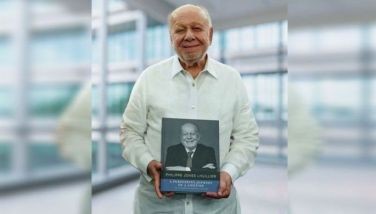Bible Reading for the Second Sunday of Easter: John 20: 19-31
The Christs All Around Us Everyday
There is a secret about today’s Gospel that needs to be shared. We know that the Sunday Gospel readings are arranged in a three-year cycle (A, B, and C). Each year the Sunday reading is different, with the exception of three very important feasts, namely Christmas, Easter, and Pentecost.
But today’s Gospel is also an exception. It is read every year. Why?
The reason is found in today’s Gospel itself, which says: “These signs have been set down to help you believe.” The message is so fundamental to faith – the Resurrection faith – that the Church wishes to hear it every year, and ponder its implications.
Read or remember again those final words to Thomas: “You have become a believer because you saw me. Blessed are they who have not seen and have believed.”
That’s us! – and all those believers across the centuries, who have not seen the risen Christ but whose willingness to believe is based on the testimony of those who did. Unfortunately, we often focus today’s celebration on the “doubting Thomas.” What is more important is the “believing Thomas,” who was the first to exclaim “My Lord, and my God!”
Poor Thomas, he started badly, not only does he miss out on Jesus’ first appearance to his beloved disciples, he tells the ten that they must be having some kind of hallucination; the only way he will believe Jesus risen is to put his fingers into the wounds of Good Friday.
A week later the Lord embarrasses him by inviting him to poke his fingers into the marks of the nails. To top all that, Thomas blurts out a confession hardly justified by the evidence: “My Lord and my God!”
This message is so fundamental, the Resurrection faith – that the Church wishes us to hear it each year, and take to heart its implications.
The testimony of those who have seen and believe is given in the Scriptures. The New Testament would not exist, if Jesus had not been raised from the dead and encountered his disciples over a period of time.
The post-Resurrection appearances of Jesus – to Magdalene at the tomb and to the two disciples on the road to Emmaus, to the Eleven and “to more than 500 brethren at one time” – tell us that the Son of God has chosen to remain human forever.
Jesus did not revert to what he had been before Bethlehem, namely, “in the form of God.” God’s own Son will be clothed in our flesh. Right now he wears our humanity.
True, there are differences. Jesus’ risen body does not have the limitation of our earthbound bodies. Doors cannot keep him out; space disappears before him; he doesn’t have to eat; his body will not grow old. That is because his body has been freed from all that usually confines the human body. He is totally free.
And still it is the flesh that grew from Mary and died on a cross. It still bears the marks of his passion. It is simply filled, shot through, with God’s life.
What a tribute, what a remarkable compliment to our humanity! The Son of God wanted the human body he took from us to be his forever.
A compliment. Yes; but also a task as well. It lays on us the challenge of shaping our humanity in Jesus’ own likeness, of gradually liberating our body and spirit from so much that is less than human, so that one day, as his body rose in glorious freedom, so shall yours and mine.
What then do we need? A Gift of God over and above the physical presence of Christ. “No one,” St. Paul insists, “can say ‘Jesus is Lord’ ” save by the Holy Spirit.
Here is the supreme profession of faith in Christ to be found in the Gospels. You hear him called Rabbi, Messiah, Prophet, and King of Israel, Son of God. Now you hear Thomas address him in the same language Israel used to address Yahweh: “My Lord and my God.”
At that critical moment Jesus could have said to Thomas what he said on a similar occasion to Peter: “Blessed are you … For it was not flesh and blood that revealed this to you; it was my Father in heaven.” It is the gift of the Holy Spirit.
A gift indeed, this grace to believe, utterly undeserved. But faith is never forced, not even on an apostle.
For all the power of God’s revealing, Thomas could still have said, “I will not believe.” Breath-taking in his outburst is not only what he said; breath-taking is how he said it – in complete freedom. Like Mary before the angel, Thomas before Christ could have said no. Like Mary, Thomas said “yes.”
What does this say to you and me? Remember the final words of Jesus to Thomas: “You have become a believer, because you saw me. Blessed are they who have not seen and have believed.”
That’s you and me. You and I live, obviously, in an era that has not seen the risen Christ. He does not show us the hole of the nails, the scar of the lance. If the Lord Jesus were to appear in our church and say to you, “Examine my hands, put your hand into my side,” I suspect that even the most skeptical among you might exclaim: “My Lord!” if not “My God!”
But such is not our situation. Not that Christ is removed from us, remote from us – far from it. He is present, as he promised, “Where two or three are gathered in [his] name,” if you love him, he said, he and his Father make their home with you.
The trouble is, we cannot see him, cannot touch him, as we can see or touch so many others we love. And that tests our faith.
There will be times, terrifying and just empty, when Jesus does not seem to be here, seems to be busy somewhere else. No wonder Jesus called you blessed. You are in fact quite fortunate, highly favored: never having seen the risen Christ, you still exclaim, on bended knee, “My Lord and my God!”
St. John tells us that “these signs have been set down (a few out of many) to help you believe.” Believe what? That Jesus is the Messiah, and more. Not just the son of Joseph and Mary, but the Son of God.
“These signs have been set down.” How well have we learn them, understood them? St. Jerome said, “Ignorance of the scripture is ignorance of Christ.” Do we listen to the New Testament proclaimed at the Mass?
There was a time when the readings were in Latin, which hardly anyone understood. But today, some have even organized Bible study groups. And scholars research their meaning, which filter down to us – only a small number of us.
Before the reforms of Vatican II and the changes in the liturgy that brought in the new lectionary, the Mass proceeded somewhat like St. Paul, with the main concentration on the meaning of Jesus’ death and resurrection.
This is the heart of the Eucharistic Prayer: Christ offering himself and us with him, all to the glory of God. And this is excellent.
But the word – the word of God and the preacher – should shape and inform all this. How do we become Christ-like unless we hear and absorb his message?
But the Christian story does not end with that exclamation of “My Lord and my God.” Matthew’s Gospel lays a frightening warning on the lips of Jesus: “Not everyone who says to me ‘Lord, Lord’ shall enter the kingdom of heaven, but he who does the will of my Father…”
On this the letter of James tells us: “What does it profit, my brothers and sisters, if a man says he has faith but has not works? Can this faith save him?… So faith by itself, if it has no works, is dead.”
A living faith is a loving faith, a total commitment to Christ that forces me out of my small self, out to the hundred hungers of the human family. God’s Son tells us that our love for others would be the sacrament, the visible sign that He is among us. This is how the world would recognize him.
Because you believe in the Christ you have never seen, you may well learn to love and serve the “Christs” you see each day. They are sitting all around you.
- Latest































